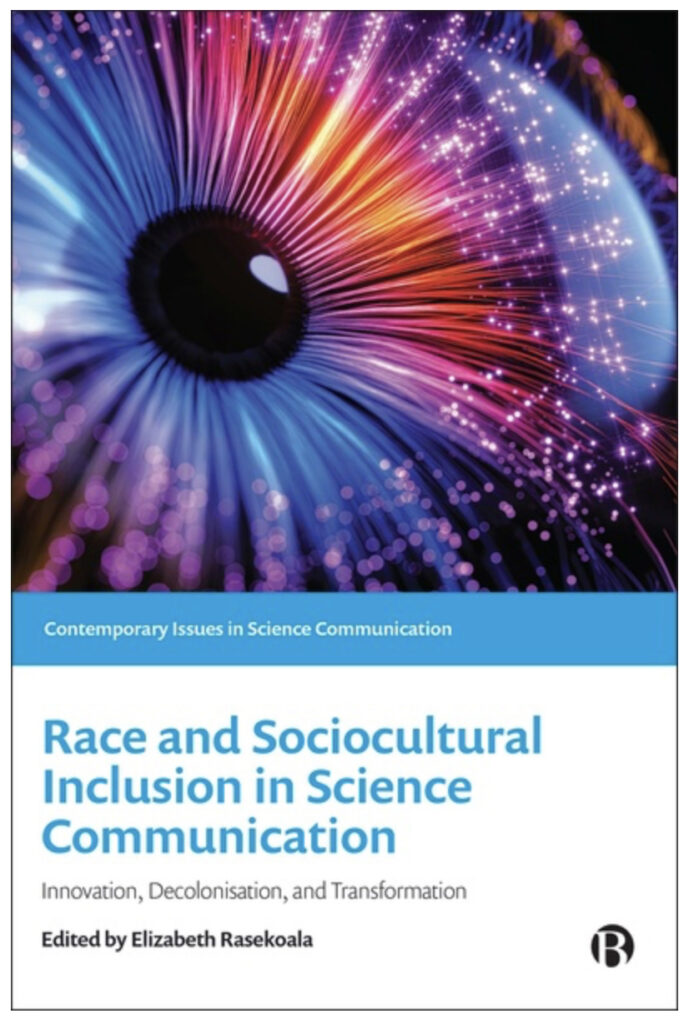Enjoy this article?
Most Museums Journal content is only available to members. Join the MA to get full access to the latest thinking and trends from across the sector, case studies and best practice advice.
Almost anyone working in the science communication or public engagement with science field will tell you science has a bit of an issue across diversity, equity and inclusion (EDI).
A key goal of science communication is often to help make Stem (science, technology, engineering, and maths) more accessible and attractive for work and study across diverse groups. What these practitioners may miss, however, is that science communication itself has a lot of room for improvement.
Science communication is nothing new, simply being the sharing of scientific knowledge and research and its influence on society. But as it becomes increasingly professionalised and recognised as a discipline in and of itself, it is only right that it is examined for its appropriateness within the modern world.
Race and Sociocultural Inclusion in Science Communication, edited by Elizabeth Rasekoala, does exactly this, providing a bold examination of the origins of standard science communication models, and offering insights into how we can adapt these to be more equitable and representative.

Rasekoala, president of African Gong: the Pan-African Network for the Popularisation of Science and Technology and Science Communication, leads a group of 30 contributing authors, including many from the Global South.
This international cohort of contributors works well to amplify marginalised voices and diverse perspectives, and guides the reader in exploring often overlooked narratives.
The book articulately describes the need to overhaul mindsets, themes, common language and perspectives that work to perpetuate Eurocentrism within science communication.
Helpfully, the numerous case studies and in-depth examples also offer inspiration as to how practitioners and decision-makers might implement change in their own settings for the betterment of science communication.
As a white male from the UK, I initially questioned my appropriateness for offering a review of this book. However, it is individuals like me, working in both the museum and Stem engagement sectors, who could learn the most from the insights and recommendations it shares.
Having observed first-hand the tendency of science centres, museums, and educational programmes to perpetuate narratives of British exceptionalism within science, reading this book reinforces the urgent need for a shift in how we work.
Reflecting on my own experience, I see that science engagement in the UK is only beginning to acknowledge that Europe’s colonial past and global westernisation is relevant to its own narrative.
This book and its authors, therefore, are well placed to play a pivotal role in steering the sector towards more equitable science communication practices for more effective and widespread outcomes.
For instance, Chapter 6, written by Temilade Sesan and Ayodele Ibiyemi, details the loss of local science and innovation knowledge transfer practices throughout the African diaspora with the arrival of European colonisers.
It uses Nigeria as a case study for the redevelopment of a homegrown science communication agenda that helps the nation to access its untapped scientific, technological and innovation potentials.
The authors share the challenges in realising this goal with lessons that are globally relevant, such as the need for policies and strategies to be in touch with “the needs and realities of ordinary citizens”, and identifying societal gaps that leave people vulnerable to misinformation.
This, along with other sections, highlights where the Global North has dominated in science communication, the limitations this causes, and offers universally applicable reflections and solutions.
This book is a worthwhile read, giving valuable insights into how embracing diverse narratives and challenging dominant frameworks can enhance any communication and engagement work.
It is likely to prompt practitioners like me to critically examine our methods and biases, urging us to redefine the discipline’s foundations.
With both the Stem agenda and EDI being central to the work of so many people in the museum sector, this book couldn’t have arrived at a better time.
Most Museums Journal content is only available to members. Join the MA to get full access to the latest thinking and trends from across the sector, case studies and best practice advice.